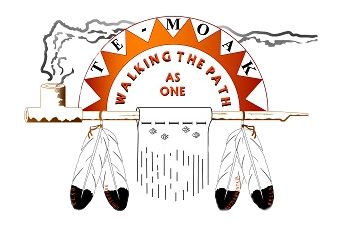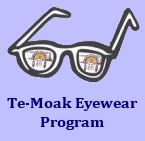
Elko Band Colony
Elko Band Council
Davis Gonzales – Chairman
Juan Arevalo – Vice Chairman
Larry Yeager – Council Member
Thalia Marin – Council Member
Robert Brady – Council Member
Jill Temoke – Council Member
LaDonna Leyva – Council Member
ELKO BAND COUCIL ADMINISTRATION
1745 Silver Eagle
Elko, NV 89801
Main Office: (775) 738-8889
Fax: (775) 753-5439
Susan Zazueta
Elko Band Administrator
administrator@elkoband.org
LOCATION AND LAND STATUS
The Elko Colony is located in the high desert of northeastern Nevada, near the Humboldt River. The reservation encompasses 192.80 noncontiguous acres adjacent to the city of Elko, the county seat of Elko County, Nevada. Elko is the only major city near the reservation. Reno, Nevada, lies 289 miles southeastward along U.S. Interstate 80. The Elko Colony was established by Executive Order on March 25, 1918 which reserved 160 acres for Shoshone and Paiute Indians living near the town of Elko. Today, 192.8 acres remain in federal trust.
AGRICULTURE AND LIVESTOCK
Many tribal members work at seasonal agriculture and ranching jobs throughout the region.
COMMUNITY FACILITIES
The tribe operates a community center in Elko. Individual tribal members receive electricity and gas from local power companies in Elko. Individual residences on the reservation pay for Elko municipal water and sewer services. The reservation receives telephone service from Frontier Communications. The Indian Health Service operates a clinic on the reservation with one doctor and two nurses. Hospital and ambulances services are provided by Elko County. Tribal youth attend the public schools in Elko. The Colony operates a child care center for preschoolers.
CULTURE AND HISTORY
The Elko Colony is one of the four separate colonies that comprise the Te-Moak Tribe of Western Shoshone Indians. Representatives of the Central Pacific Railroad founded the town of Elko, Nevada, in 1868. Many Shoshone families began camping nearby and working at mining and railroad jobs in the community. for almost half a century, they lived in a series of camps in the Elko area. Finally, in 1918 an Executive Order established a 160-acre reservation near the city of Elko. The 250 Shoshones of Elko were forcibly moved once more before receiving their present parcel of land in 1931. Since Elko remains the largest town in northeastern Nevada, many Shoshones have continued to migrate there for railroad and mining work. In recent years, the Western Shoshone people have filed numerous suits against the federal government in an attempt to regain traditional lands now classified as Federal Public Lands. Decisions in several of these cases are still pending. The tribe is also passing the Shoshone language on to younger generations.
ECONOMIC DEVELOPMENT PROJECTS
The Elko Band plans to expand the tribal child care center as well as the tribal convenience store and smoke shop.
GOVERNMENT AS EMPLOYER
The tribal government is an Equal Opportunity Employer.
GOVERNMENT
The Indian Reorganization Act of 1934 allowed the Elko band of Shoshone to organize a government "on a reservation basis only." The Elko Colony is a member of the Te-Moak Tribe of Western Shoshone Indians, with tribal headquarters in Elko. The Te-Moak Tribal Council has total jurisdiction over all tribal lands, though the colonies retain sovereignty over all other affairs. Several bands joined together to form the Te-Moak Tribe and formed a tribal council in 1938. An Elko Colony constitution was ratified on August 26, 1982. The Elko Community Council, composed of seven popularly elected members, handles tribal business. The council is led by a chairman, and members serve three-year terms. Council candidates must belong to the Te-Moak Tribe, be at least 21, have at least one-fourth Shoshone blood, and have lived on the reservation for one year. The council governs the colony, contracting with county, municipal, and federal agencies to provide social services and economic development programs. The Elko Band also elects two representatives to serve on the Te-Moak Council and the Inter-Tribal Council of Nevada.
INFRASTRUCTURE
U.S. Interstate 80, runs east to west in close proximity to the Elko Colony. Nevada State Highway 275 runs north from the reservation, while State Highway 228 runs due south. Private and commercial air facilities are located at Elko Airport, two miles from the reservation. Commercial bus lines are located in Elko, as are most major freight carriers. Passenger railway service is unavailable, but commercial railways service the Elko area.
MINING
The tribe is not directly involved with the ownership or operation of mines in the Elko area. However, the tribal community depends upon the employment provided by the mining industry.
SERVICES
The tribe owns and operates a smoke shop and convenience store within the reservation
STATISTICS
Federal reservation
Western Shoshone Indians
Elko County, NV
Total area: 192.8 acres
Federal trust: 192.8 acres
High school graduate or higher: 6%
Total labor force: 585
Tribal enrollment: 1,143
TOURISM AND RECREATION
The Elko Colony lies in close proximity to several scenic recreation areas. The Humboldt National Forest is approximately 20 miles east of the reservation. The Ruby Lake National Wildlife Refuge lies some 75 miles to the southeast, and scenic Hole in the Mountain Peak is approximately 75 miles northeast of the reservation.

A special thanks for the Beadwork provided by Nick Knight, Linda Gonzales, Nikki Jackson, Dynneil Atkins, and others



